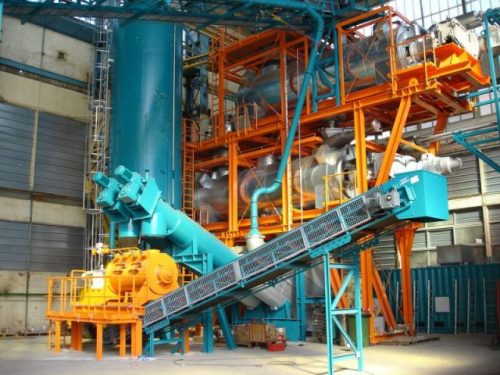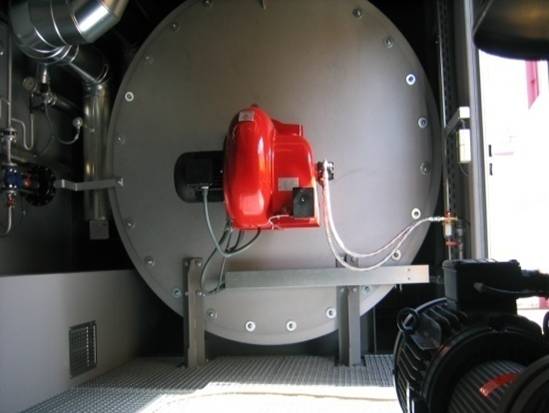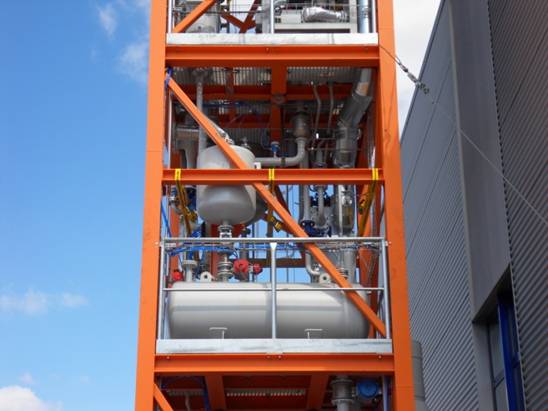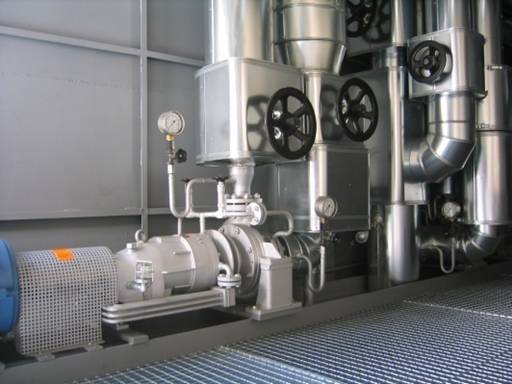Remediation of mercury contaminated industrial site for future expansion of industrial area
70,000 tons of mercury contaminated soil and building rubble have to be cleaned in an industrial facility in the south of France until 2013. For the realization of this remediation work, an econ industries VacuDry® 12,000 has been in operation since early 2011. After the treatment the mercury free soils can be re-used on-site as building material.
A similar but smaller econ industries VacuDry® plant for mercury remediation has been operated in Leipzig, Germany since 2002. To fulfil the client’s requirements several of the standard VacuDry® components had to be re-engineered and the vacuum system, the piping and all relevant components had to be optimized. To handle the greater throughput requirements for our French client, the dryer body had to be scaled up to increase the capacity.
Supported by a heating unit using thermal oil with temperatures up to 400 °C a final mercury content of less than 1 ppm and a final mercury content in the leachate test of the soils of below 0.1 ppm was achieved. These acceptance criteria had previously been proved by on-site trials using econ industries’ own laboratory equipment.
A semi-mobile plant design allows later use of the equipment at other places when the initial remediation job is done.
Design characteristics
- Designed for bulky loads and coarse material
- Lowest vacuum and high temperature execution for in-depth mercury remediation
- Specially designed high temperature discharge system for optimized batch times
- Turn-key concept including instrument air and cooling water supply
- Two condensate lines for separation of water and mercury condensate
- Parallel redundant vacuum system for highest plant availability











